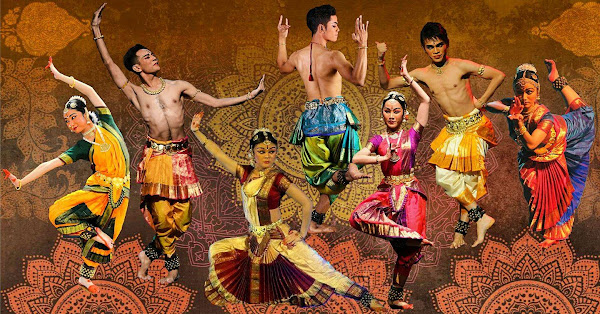Saraswati Mahavidyalaya - Perth, Australia
Saraswati Mahavidyalaya in Perth, Australia
This article reflects on SFOL 2010 and is timely as SFOL 2020: Reimagined, the Virtual Festival is about to be launched. Further projects include ChitAmbara which aspires to initiate various interdisciplinary projects and open the possibility for professionalism.
The Swan Festival of Lights is celebrated in Perth, Australia in conjunction with Deepavali, the Hindu festival of light. Launched in 2008, it aptly uses light as its overarching theme. The Festival embraces the multifaceted local and migrant communities of the city through the arts, crafts and cuisine, as well as publicising itself as a ‘smoke- and alcohol-free family-friendly event’. The festival aims to provide a space for the interaction, understanding and appreciation of multiple cultures that form the fabric of Western Australia’s society. Presented by The Temple of Fine Arts Inc. and Annalakshmi Cultural Centre of Western Australia which are sister organizations of the Temple of Fine Arts (TFA) Kuala Lumpur, it has numerous funders and supporters, principally the City of Perth and The Bell Tower.
The 2010 iteration was held from 4-7 November 2010 at the Esplanade Oval, an open field across from the picturesque Swan River. This event attracted an estimated 10,000 people over the 4 days. Around the perimeter of the field, innumerable stalls and tents were erected serving vegetarian food, traditional handicraft, and attire, as well as activities such as face-painting and henna tattooing. It created an incredible carnivalesque atmosphere which is a recognizable feature of Indian culture and traditions. Dance and music workshops were held each afternoon, and the festival highlight of nightly performances featured tertiary students, professionals, and community-based arts groups – there was something for everyone.
The daytime workshops held from Friday to Sunday included Zumba dance and fitness by Danza Loca, martial arts by the Ancestrais Capoeira group, belly dancing by Rosehips Belly dance, zapin by ASWARA, cooking demonstrations, and health workshops. Although it was very challenging to participate in and conduct these workshops in the searing heat of a Perth summer accompanied by the swarms of attacking flies, the principal motivation was to enjoy oneself as one shared and learned the cultures of the ‘other’ – and everyone enthusiastically participated.
The performances (similar programs were held on Thursday and Saturday while the show on Friday was repeated on Sunday) began with a simple procession by TFA called the Vande Mataram which then segued into the other performances by Wadumbah Dance Group with an aboriginal dance and music performance, Casa Del Compas with a flamenco piece, Chung Wah Dance with Chinese dance repertoire, the Rozhazhka Ukrainian Cossack Dancers, salsa by Danza Loca, Batuque Bacana Samba and ballet by Youth Ballet Western Australia.
One of the crowd’s favourites was Wild Things by Jenni Large, performed by the dance students from the Western Australia Academy of Performing Arts. This was choreographed by Large who is herself a student at WAAPA, showcased professionally trained dancers who were comfortable with and confident of their bodies, easily mastering the rhythms and isolations that were required in this work. It was a return to the fundamental attraction that dance possesses, which is a synergy between music and movement. Without any narrative, the choreography relied on the pulsating soundtrack and modern dance technique in a work that drew heavily on African or Aboriginal sensibilities, displaying a stage presence and prowess that left the audiences enraptured.
The musicians AkashA and Inner Space were also a huge hit with their easy-listening melodies played by superb musicians at the peak of their virtuosity. With Jamie Wilson also serving as an emcee, introducing their works and providing background information spliced with humour, his talent as an entertainer beyond his musicianship is obvious. He created a warm rapport with the audience. However, with Wilson and sitarist Kumar Kathigesu playing for both bands, it might have been confusing to some members of the audience to differentiate the two groups. In simple musical terms, Inner Space employs more Indian instrumentation while AkashA brands itself as a Malaysian world fusion music band exploring international rhythms like blues, bossanova or samba in their repertoire. Nevertheless, both bands were great ambassadors of Malaysian-bred talent.
Next in the pipeline – the Shiva Family wishes to find a permanent home
for the Temple of Fine Arts and the Saraswati MahaVidhyalaya Insitute, which is
intended to be a holistic institution of higher learning where ‘the ultimate
goal is to serve humanity through education’. This is a mammoth task, but the
Shiva Family believes that faith can move mountains and it is not a question of
‘if’, but rather of ‘when’ this comes to fruition.
It is heart-warming to note that the festival has grown exponentially from drawing crowds of 3000 at the start to around 40,000 in 2018. This growth is a testament to the support received from the local community of Western Australia, governmental and private supporters of the festival who have embraced the need for such an inclusive festival to showcase Perth’s diversity, and to the support received from all international collaborators who have been on this journey with SMV and Annalakshmi from day 1.
Audiences can use the following link to connect with us digitally in anticipation of SFOL 2020 - https://sfol.com.au/how-to-connect
Photos courtesy of SFOL.









Reaching out to the art of dance for humanity who have dance in their body and soul. Thank you
ReplyDeleteYes indeed Matthew ... especially in these times more than ever. Thank you for reading.
Delete